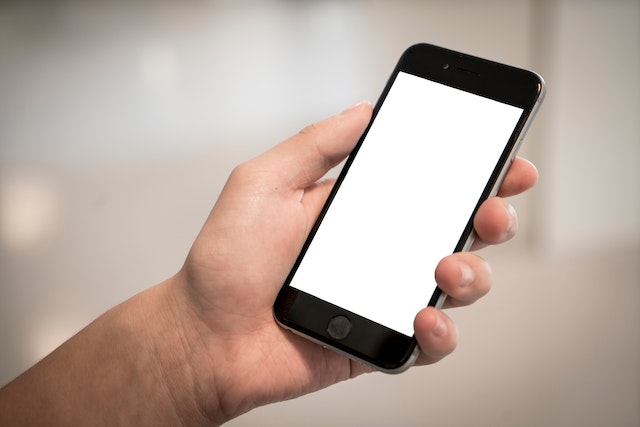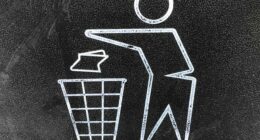Gorilla Glass and tempered glass both offer protection from everyday wear and tear, but the difference between them lies in their durability. Gorilla Glass is more resistant to shock damage, making it the ideal choice for devices with larger screens that are frequently used outdoors. Tempered glass offers a cheaper alternative but is not as resilient against shocks or scratches so should be avoided when possible.
What is Gorilla Glass?
Gorilla Glass is a type of chemically strengthened glass developed by Corning, Inc. that is used for mobile devices. It is designed to be thin, light and damage-resistant. The original Gorilla Glass was introduced in 2007 and has been used on over 5 billion devices worldwide. The company has released several iterations of the product since then, each one designed to be even stronger and more resistant to damage.
Gorilla Glass is made through a process of ion exchange, which involves replacing the potassium ions in the glass with larger sodium ions. This makes the glass harder and more resistant to scratches and other types of damage. The company also uses a proprietary manufacturing process that helps to further improve the strength of the glass.
One of the benefits of Gorilla Glass is that it can be used in a variety of applications, including smartphones, tablets, laptops, wearables and more. In addition to its strength and lightweight properties, Gorilla Glass also has good optical clarity and can be manufactured with thinness levels as low as 0.4 mm.
What is Tempered Glass?
The average person has probably heard of Gorilla Glass, but they may not be as familiar with tempered glass. Tempered glass is a type of safety glass that is often used in applications where there is a risk of breakage and injury, such as car windshields and shower doors. It is made by heating the glass to high temperatures and then cooling it rapidly. This process strengthens the glass and makes it more resistant to shattering.
The Difference Between Gorilla Glass and Tempered Glass
(Image by Dariusz Sankowski from Pixabay )

Gorilla Glass and Tempered Glass are two types of strengthened glass. They are both created through a process of heating and cooling the glass to make it stronger. Gorilla Glass is made with an alkali-aluminosilicate composition, while Tempered Glass is made with a soda-lime composition.
Gorilla Glass is more resistant to scratches and impact than Tempered Glass. It is also thinner and lighter, making it ideal for use in mobile devices. Tempered Glass is more resistant to heat than Gorilla Glass. It is also less likely to shatter when exposed to sudden changes in temperature.
What is better Gorilla Glass or tempered glass?
There are a few key differences between gorilla glass and tempered glass that may make one or the other a better choice for your needs. Gorilla glass is typically thinner and lighter than tempered glass, making it a good choice for mobile devices. It is also more resistant to scratches and impact damage. Tempered glass is stronger overall and can withstand higher temperatures, making it a good choice for cooking surfaces or other applications where heat resistance is important.
How to Choose the Right One for You
Gorilla Glass is a type of chemically strengthened glass that is designed to be more scratch and shatter resistant than regular glass. It is often used in high-end smartphones and other devices where durability is important. Tempered glass, on the other hand, is a type of heat-treated safety glass that is designed to be more resistant to breaking and shattering. It is often used in products like windshields, shower doors, and table tops.
If you are looking for a tough and durable material that can withstand some wear and tear, Gorilla Glass may be the better option. If you need a material that is less likely to break or shatter, tempered glass may be the way to go. Ultimately, the decision comes down to personal preference and what you plan to use the glass for.
Is tempered glass necessary for Gorilla Glass?
No, tempered glass is not necessary for Gorilla Glass. Gorilla Glass is a brand of chemically strengthened glass developed by Corning that is highly durable and scratch-resistant. It is commonly used in the manufacture of mobile devices and other electronic devices as a protective cover glass. Tempered glass, on the other hand, is a type of glass that has been heat-treated to make it stronger and more resistant to breaking. While tempered glass can provide additional protection, it is not required for Gorilla Glass to function as intended.
What is stronger than Gorilla Glass?
There are a variety of materials that are stronger than Gorilla Glass. However, it is important to keep in mind that the strength of a material does not always equate to its ability to withstand damage. For example, a material may be very strong but also very brittle, meaning that it is more likely to break or shatter under impact.
Some of the most common materials that are stronger than Gorilla Glass include sapphire crystal, polycarbonate, and Gorilla Glass 2. Each of these materials has its own unique properties that make it ideal for different applications.
Sapphire crystal is one of the hardest materials on earth and is often used in high-end watches and other electronic devices. It is incredibly scratch resistant and can withstand a great deal of wear and tear. However, it is also very brittle and can easily shatter if dropped or hit with enough force.
Polycarbonate is another common material that is used in a variety of applications due to its strength and durability. It is often used in bulletproof windows and the lenses of safety goggles. Polycarbonate is much less brittle than sapphire crystal and can better tolerate impact without shattering. However, it is not as scratch resistant as sapphire crystal and can be scratched more easily.
Gorilla Glass 2 is the latest version of Corning’s Gorilla Glass technology and offers improvements in both scratch resistance and toughness. It is now widely used in smartphones and other mobile devices.
Will Gorilla Glass break?
Gorilla Glass is designed to be highly durable and scratch-resistant, but it can still break under certain circumstances. No material is completely unbreakable. Factors that can cause Gorilla Glass to break include excessive force, sharp impacts, and thermal stress caused by rapid temperature changes. However, Gorilla Glass is generally considered to be more resistant to breaking than conventional glass, which makes it a popular choice for use in mobile devices and other electronic devices that are subject to rough handling and regular use.
Does tempered glass break easily?
(Image by Jan Kuss from Pixabay )

Tempered glass is stronger and more durable than conventional glass, but it can still break. The tempering process makes the glass more resistant to breakage by distributing the stress evenly across the surface of the glass, so that it is less likely to shatter into sharp, dangerous pieces if it is subjected to impact or sudden thermal stress. However, tempered glass is not unbreakable, and it can still break if subjected to excessive force or if it is struck in a way that concentrates the stress in a small area. In general, tempered glass is considered to be more resistant to breakage than conventional glass, but it can still break if subjected to the right conditions.
What are the types of protective glasses for smartphones?
There are several types of protective glasses available for smartphones, each with its own unique set of features and benefits. Some of the most common types of protective glasses include:
- Gorilla Glass: Developed by Corning, this is a chemically strengthened glass that is designed to be highly scratch-resistant and durable. It is commonly used as the cover glass on mobile devices and other electronic devices.
- Tempered Glass: This type of glass is heat-treated to make it stronger and more resistant to breakage. Tempered glass is often used as a protective cover for mobile devices and other electronic devices because it provides a high level of scratch resistance and protection from impacts.
- Plastic Film Protectors: This type of protector is made from a flexible, durable plastic material and is applied to the surface of the device’s screen. Plastic film protectors are often less expensive than tempered glass protectors and provide a similar level of protection from scratches and impacts.
- TPU (Thermoplastic Polyurethane) Protective Cases: TPU is a flexible, shock-absorbing material that is often used to create protective cases for mobile devices. TPU cases provide protection from scratches and impacts and can also help to absorb shock if the device is dropped.
- Hard Plastic Protective Cases: This type of case is made from a hard plastic material and is designed to fit snugly around the device. Hard plastic cases provide a high level of protection from impacts and scratches and are often used in combination with tempered glass protectors to provide maximum protection for the device.
Each type of protective glass or case has its own set of benefits and drawbacks, and the best choice will depend on your specific needs and preferences.
What are the types of gorilla glass?
Gorilla Glass is a brand of chemically strengthened glass developed by Corning. Over the years, the company has developed several generations of Gorilla Glass, each with its own unique set of features and benefits. Some of the most common types of Gorilla Glass include:
- Gorilla Glass 3: This is the third generation of Gorilla Glass and was introduced in 2013. It is designed to be highly durable and scratch-resistant and is widely used in mobile devices and other electronic devices.
- Gorilla Glass 4: This is the fourth generation of Gorilla Glass and was introduced in 2014. It is designed to be even more durable and scratch-resistant than previous generations of Gorilla Glass and is often used in high-end mobile devices.
- Gorilla Glass 5: This is the fifth generation of Gorilla Glass and was introduced in 2016. It is designed to be even more durable and scratch-resistant than previous generations of Gorilla Glass and is often used in premium mobile devices.
- Gorilla Glass Victus: This is the latest generation of Gorilla Glass and was introduced in 2020. It is designed to be the most durable and scratch-resistant Gorilla Glass to date, and provides two-times better drop performance than Gorilla Glass 6.
Each generation of Gorilla Glass is designed to offer improved performance and durability over the previous generation, making it a popular choice for use in mobile devices and other electronic devices.
What are the types of tempered glass?
Tempered glass is a type of safety glass that is heat-treated to make it stronger and more resistant to breakage. Some of the most common types of tempered glass include:
- Heat Strengthened Glass: This type of tempered glass is heated to a temperature that is below the melting point, causing the surface of the glass to compress and the core of the glass to remain in tension. This makes the glass stronger and more resistant to breakage, but not as strong as fully tempered glass.
- Fully Tempered Glass: This type of tempered glass is heated to a temperature that is above the melting point, causing the entire glass to be in compression. This makes the glass stronger and more resistant to breakage than heat strengthened glass, but it also means that if the glass does break, it will shatter into small, rounded pieces that are less likely to cause injury.
- Laminated Tempered Glass: This type of tempered glass is made by bonding two or more sheets of tempered glass together with a plastic interlayer. This makes the glass stronger and more resistant to breakage, and also provides additional protection against shattering if the glass is broken.
- Toughened Glass: This type of tempered glass is also known as tempered safety glass and is commonly used in applications where high resistance to breakage is required, such as in automobile windshields, building windows, and shower enclosures.
Each type of tempered glass has its own set of benefits and drawbacks, and the best choice will depend on the specific requirements of the application.
What are the advantages and disadvantages of tempered glass?
Advantages:
- Strength and Durability: Tempered glass is much stronger than regular glass and is more resistant to breakage, making it ideal for use in applications where high resistance to breakage is required.
- Safety: If tempered glass does break, it will shatter into small, rounded pieces that are less likely to cause injury than sharp pieces of regular glass.
- Heat Resistance: Tempered glass is also more resistant to thermal stress than regular glass, making it ideal for use in high-heat applications, such as stovetops and oven doors.
- Scratch Resistance: Tempered glass is also more resistant to scratches than regular glass, making it ideal for use in applications where a high level of scratch resistance is required, such as in smartphone screens and other electronic devices.
Disadvantages:
- Cost: Tempered glass is typically more expensive than regular glass, making it more expensive to use in applications where cost is a concern.
- Difficulty of Cutting: Tempered glass is more difficult to cut than regular glass, making it more challenging to produce custom shapes and sizes.
- Cannot be Reshaped: Tempered glass cannot be reshaped once it has been heat-treated, making it less versatile than regular glass in certain applications.
- No Edges: Tempered glass does not have exposed edges, which can limit its versatility in certain applications.
What are the advantages and disadvantages of Gorilla Glass?
Advantages:
- Strength and Durability: Gorilla Glass is designed to be highly durable and scratch-resistant, making it ideal for use in mobile devices and other electronic devices where a high level of protection is required.
- Scratch Resistance: Gorilla Glass is more resistant to scratches than regular glass, making it ideal for use in applications where a high level of scratch resistance is required, such as in smartphone screens and other electronic devices.
- Light Weight: Gorilla Glass is relatively lightweight, making it ideal for use in portable electronic devices where weight is a concern.
- Chemical Resistance: Gorilla Glass is also resistant to chemicals, making it ideal for use in applications where exposure to chemicals is a concern, such as in medical devices and scientific equipment.
Disadvantages:
- Cost: Gorilla Glass is typically more expensive than regular glass, making it more expensive to use in applications where cost is a concern.
- Fragility: While Gorilla Glass is designed to be highly durable and scratch-resistant, it is still relatively fragile and can break if subjected to high impacts or drops.
- Difficult to Repair: If Gorilla Glass is damaged, it can be difficult to repair and may need to be replaced, adding to the cost of using this type of glass.
- Limited Availability: Gorilla Glass is only manufactured by Corning, and is not widely available from other manufacturers, which can limit its availability in certain markets.
Featured Image By – Photo by Terje Sollie









